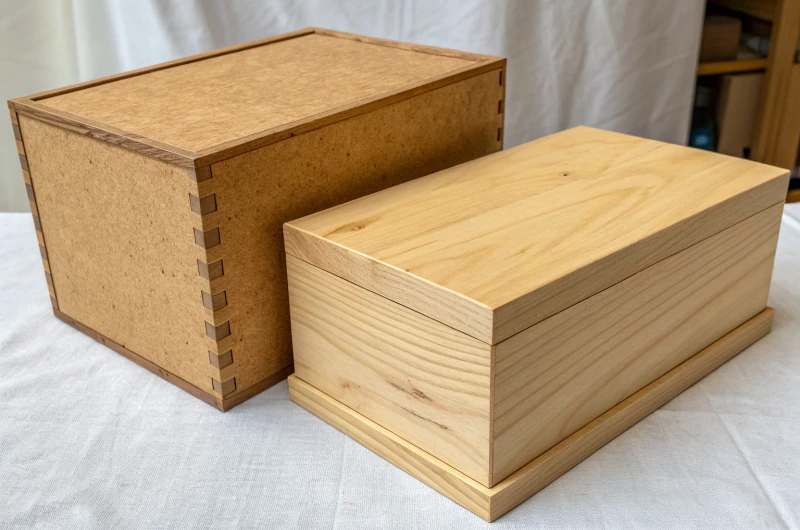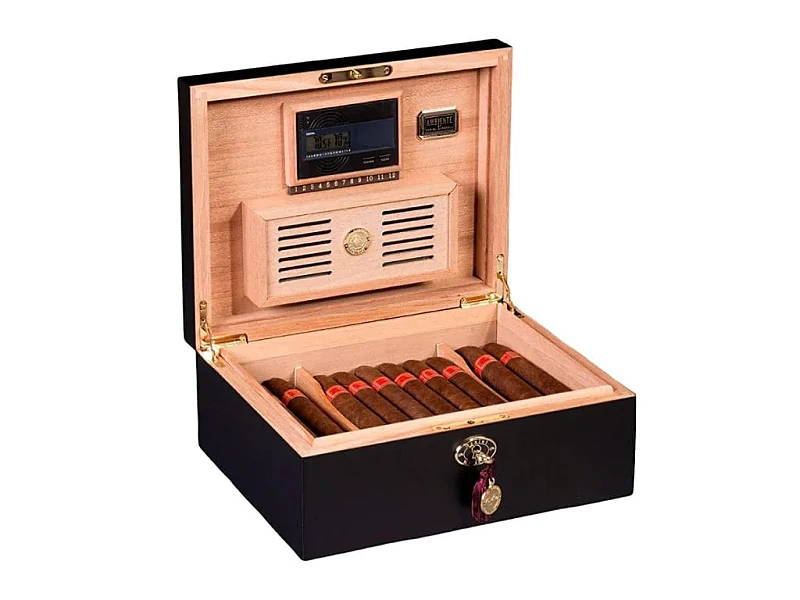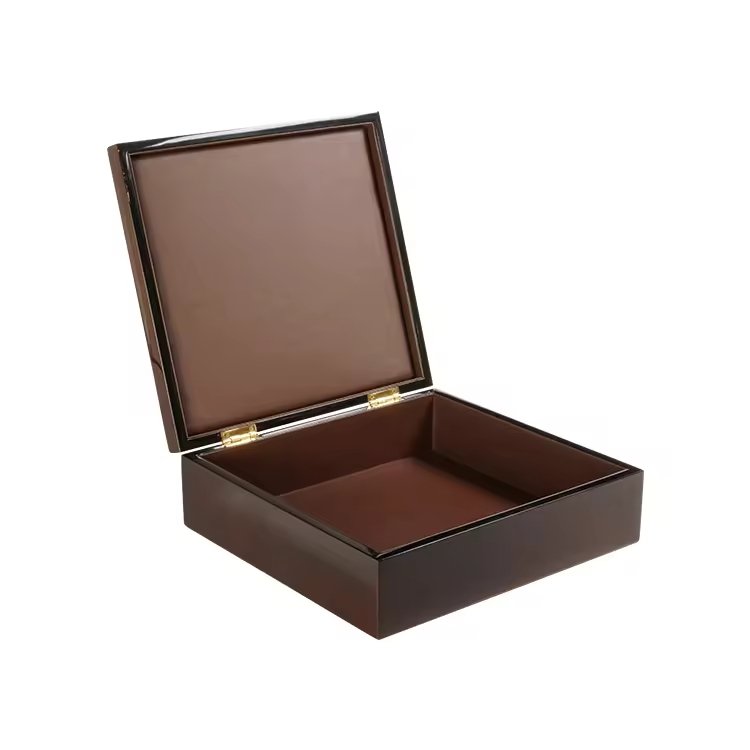
Ensuring the proper calibration of a soft-close lid in a prototype jewelry box is essential for delivering a high-quality user experience.
Evaluating the soft-close mechanism involves examining mechanical components, testing performance under various conditions, and identifying signs that may require adjustments.
By conducting thorough assessments, manufacturers can ensure that the jewelry box lid operates smoothly and meets customer expectations.
What mechanical features control the soft-close function in high-end jewelry boxes?
In high-end jewelry boxes, the soft-close function is typically managed by specialized hinges equipped with damping mechanisms.
Key Components:
-
Damped Hinges1: These hinges contain built-in dampers that control the speed of the lid's closure, preventing it from slamming shut. The damping mechanism ensures a gentle and quiet closing action.
-
Gas Struts or Pistons2: Some designs incorporate gas struts or pistons to assist in controlling the lid's movement, providing a smooth and controlled descent.
-
Spring Mechanisms3: Springs may be used to counterbalance the weight of the lid, aiding in a controlled closure.
Understanding these components is crucial for evaluating and calibrating the soft-close function effectively.
How do you test the lid’s closing speed and smoothness without slamming?
To assess the lid's closing performance:
-
Manual Testing: Open the lid fully and release it, observing the speed and smoothness of its descent. The lid should close gently without abrupt movements or slamming.
-
Timing the Closure: Use a stopwatch to measure the time it takes for the lid to close from a specific angle. Consistent timing across multiple tests indicates proper calibration.
-
Auditory Assessment: Listen for any unusual noises, such as squeaks or clicks, during the closing process, which could indicate issues with the damping mechanism4.
These tests help ensure that the lid's closing action meets the desired soft-close performance standards5.
What tolerance levels are acceptable for hinge resistance and alignment?
Acceptable tolerance levels for hinge resistance and alignment are critical for the functionality and aesthetics of the jewelry box.
- Consistent Resistance: The force required to open and close the lid should be consistent throughout its range of motion. Variations may indicate improper lubrication or defects in the hinge mechanism.
Alignment:
-
Uniform Gaps7: The spacing between the lid and the box should be uniform on all sides when closed. Misalignment can lead to uneven gaps, affecting both appearance and functionality.
-
Flush Surfaces8: The lid should sit flush with the box's base when closed, without protrusions or recesses.
Maintaining these tolerances ensures a high-quality product that operates smoothly and looks aesthetically pleasing.
Can repeated open-close cycles reveal inconsistencies in soft-close performance?
Yes, subjecting the jewelry box to repeated open-close cycles can help identify inconsistencies in the soft-close mechanism9.
-
Cycle Testing11: Perform a series of open and close cycles, typically ranging from hundreds to thousands, to simulate extended use. This process can reveal issues such as:
-
Degradation of Damping Mechanism: Over time, the damping components may wear out, leading to faster or uneven closing speeds.
-
Loosening of Hinges: Repeated use can cause hinges to loosen, affecting alignment and resistance.
-
By conducting durability tests, manufacturers can ensure the longevity and reliability of the soft-close function.
How does temperature or humidity affect soft-close mechanisms over time?
Environmental factors like temperature and humidity can impact the performance of soft-close mechanisms12.
Temperature Effects:
- Viscosity Changes: Extreme temperatures can alter the viscosity of lubricants within the damping mechanism, affecting the smoothness of operation.
Humidity Effects:
- Material Expansion or Contraction: High humidity can cause wooden components to swell, while low humidity can lead to contraction. These changes can affect hinge alignment and the overall fit of the lid.
Testing Under Various Conditions:
- Environmental Testing: Subject the jewelry box to different temperature and humidity conditions to observe any changes in the soft-close performance. This helps in identifying potential issues that could arise in various climates.
Understanding these effects allows for the design of mechanisms that maintain consistent performance across diverse environmental conditions.
What signs indicate the need for adjustment or better hinge integration?
Identifying early signs of malfunction can prevent long-term issues and ensure customer satisfaction.
Indicators for Adjustment:
-
Uneven Closing Speed13: If the lid closes too quickly or slowly, it may indicate a problem with the damping mechanism that requires adjustment.
-
Noises During Operation14: Unusual sounds like squeaking or grinding suggest lubrication issues or misalignment.
Indicators for Improved Hinge Integration:
-
Misalignment15: Visible gaps or unevenness between the lid and the box when closed indicate poor hinge installation or design.
-
Inconsistent Resistance: Variations in the force needed to open or close the lid suggest issues with hinge quality or installation.
Addressing these signs promptly ensures the jewelry box functions as intended and maintains its aesthetic appeal.
Conclusion
Thorough testing and evaluation of the soft-close lid mechanism in a prototype jewelry box are essential to ensure smooth operation, durability, and customer satisfaction. By focusing on mechanical components, performance under various conditions, and early indicators of issues, manufacturers can deliver high-quality products that meet the expectations of discerning customers.
Brand Name: WoodoBox
Slogan: Custom Wooden Boxes, Crafted to Perfection
Website: www.woodobox.com
-
Explore this link to understand how damped hinges enhance the soft-close function, ensuring a smooth and quiet closure for jewelry boxes. ↩
-
Learn about gas struts and pistons to see how they contribute to the controlled movement of lids in high-end jewelry boxes. ↩
-
Discover the importance of spring mechanisms in balancing lid weight and ensuring a gentle closure in jewelry boxes. ↩
-
Discovering how damping mechanisms function can improve your understanding of lid design and performance. This resource offers valuable technical information. ↩
-
Learning about soft-close performance standards can help you ensure your product meets industry benchmarks. Check this link for comprehensive guidelines. ↩
-
Understanding hinge resistance is crucial for ensuring smooth operation and longevity of your jewelry box. Explore this link for detailed insights. ↩
-
Uniform gaps are essential for both aesthetics and functionality. Discover techniques to ensure perfect alignment in your jewelry box. ↩
-
Flush surfaces enhance the overall look and functionality of your jewelry box. Learn best practices to achieve this ideal design. ↩
-
Understanding the soft-close mechanism can help you appreciate its design and functionality, ensuring better product choices. ↩
-
Exploring best practices in durability testing can enhance your knowledge of product reliability and performance assessment. ↩
-
Learning about cycle testing methods can provide insights into ensuring product longevity and quality assurance. ↩
-
Explore this link to understand the intricacies of soft-close mechanisms and their performance under varying conditions. ↩
-
Understanding the causes of uneven closing speed can help you troubleshoot and maintain your jewelry box effectively. ↩
-
Exploring the causes of noises can guide you in resolving issues and prolonging the life of your jewelry box. ↩
-
Learning how to fix misalignment can enhance the functionality and appearance of your jewelry box, ensuring it operates smoothly. ↩





